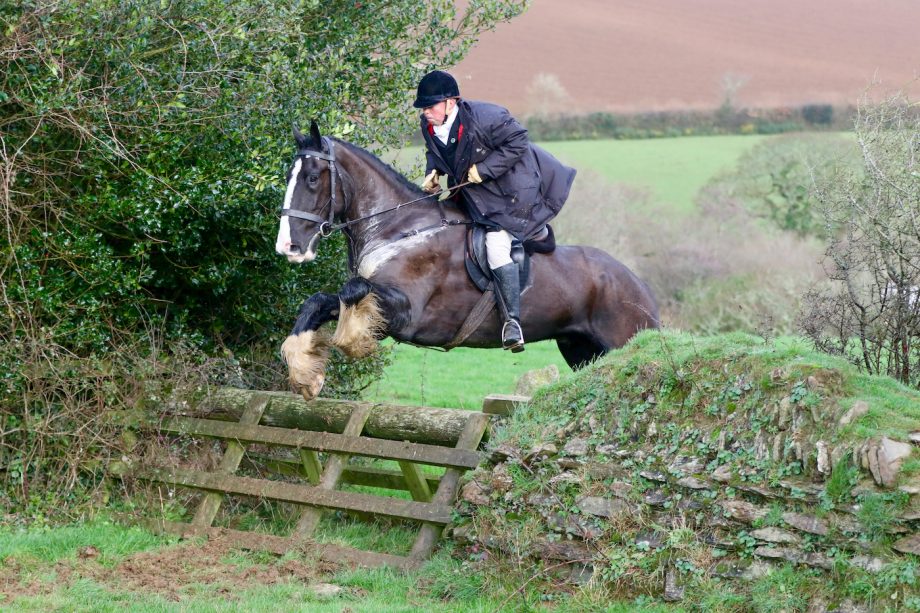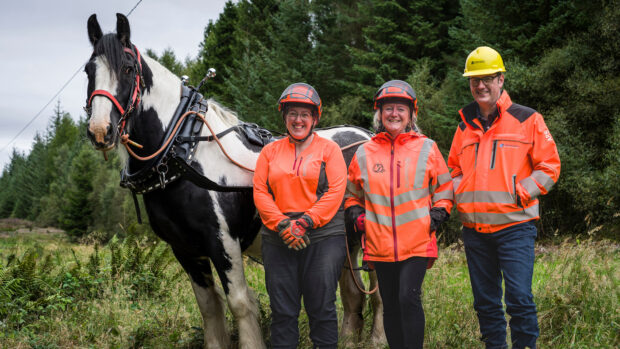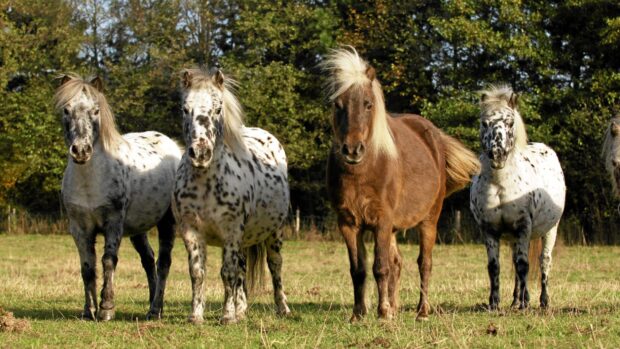As unlikely as it may sound, the substantially built Percheron has more in common with the Arab or Iberian breeds than British heavy horses. Originating in northern France, the Percheron is a large, powerful draft horse, but with its energetic, free-moving stride and lack of feathered limbs, it combines elegance with its great strength.
Although they can be as small as 15.2hh (depending on which country’s studbook regulations you are referring to), most are much taller and have at times held the recorded of the biggest horse in the world. They are also among the strongest horse in terms of pulling power, rivalling other heavies such as the Shire, Clydesdale and Belgian draft. With its unfeathered legs and long stride, the handsome Percheron is an outlier in the world of heavy horse breeds, owing much of its elegance and poise to infusions of Oriental blood.
In this article: Characteristics | Temperament | History | Factfile
Percheron characteristics
According to the British Percheron Horse Society’s breed standard, this equine is a heavy draft horse with great muscular development, combined with style and activity. It should also:
- Have ample bone of good quality, general impression of balance and power
- Be grey or black with a minimum of white. (In the US studbook, chestnuts, roans and bays are also accepted)
- Stallions should be at least 16.2hh by age two. Mares at least 16.1hh.
- Head: wide across the eyes, which should be full and docile; ears medium-size and erect; deep curved cheek; intelligent expression
- Body: strong neck of ample length; full arched crest in case of stallions; wide chest; deep well-laid shoulders. Long and wide hindquarters with no suggestion of goose rump
- Back: strong and short, with wide and deep ribs
- Limbs: strong legs and full second thighs; big knees and broad hocks; heavy, flat bone; short cannons; medium-length cannons; reasonable-size feet with blue horn. Clean limbs without feather
- Action: straight, bold and with a long free stride rather than short and snappy. Hocks well flexed and kept close

A beautifully dappled young Percheron. In the UK and France, Percherons are always grey or black
Temperament
Percherons are typically docile and good-natured, without being sluggish or dull. They are characteristically bombproof in traffic and can switch without fuss from busy towns to quiet field work. They have great stamina and high energy levels, and are comparatively fast for a draft horse, which enables them to work willingly.
Potted history of the Percheron
The Percheron originated on the grass-rich limestone soil of Le Perche, a former province in Normandy, France, from which it takes its name. The first records for the breed date back to the eighth century. Rumour has it that the Percheron is descended from the Boulonnais horse – another elegant grey draft horse – used in the Roman invasion of Brittany. Others claim that Charles Martel, ruler of Francia, captured Arab and Barb horses in his victory over the Muslims in Poitiers in the 1st century AD and crossed them with his native Norman warhorses to upgrade the latter. History does not record the exact facts, but today’s Percheron is likely to be native French workhorses crossed with the stamina and fineness of Arabs and Iberian horse breeds.
The French pinpoint a stallion named Jean Le Blanc, born in 1824, as the foundation sire for the breed. He was a direct descendant from the Arab horses used in the Crusades. The French government established a stud at Le Pin for the development of army mounts in the early 1800s and a stud book was created in 1883.
Throughout its history, Percheron breeders have adapted this draft horse according to the needs of the day. At times a faster battle charger was required, at others more of a heavier farm animal. The grey colour was favoured by French knights, who were typically mounted aboard a white charger. Later on, light-coloured stagecoach horses were preferred because of their visibility at night. (Today, the British and French studbooks only permit grey and black colours.) The Le Perche breeders complied with current demand. It’s apt that the Percheron Horse Association of America nicknames the breed “the do-all draft horse”.
We do not know exactly when the Percheron first came to England – it may have been via William the Conqueror in 1066. The Americans jumped on the Percheron bandwagon in the 19th century, believing the breed to be ideal as a modern farm animal, and it rapidly became the most popular draft horse breed in the US. Following that, thousands of horses with Percheron blood were then imported to Britain from North America for light draught work.
In 1918, the British Percheron Society was formed. Some 36 stallions and 321 mares were imported from France, plus stock from North America and Canada, and these formed the basis for the first studbook in this country. The British Percheron stands alone from other Percheron breed societies with its own breed standards. As such there are slight differences between the French, North American and British Percheron – for example, the British one is typically between the other two in terms of height.
Few breeds of horse can claim to have had a history as colourful, long, useful and varied as the Percheron. It has been used in so many domains, from ancient warfare to delivering goods, transporting artillery and soldiers in the World Wars to agricultural work. Nowadays, it is still popular on farms, particularly in conservation and forestry work, but also as a riding and driving horse.
Percheron fact file
- A Percheron called Dr Le Gear was recorded in 1915 as being the world’s biggest horse, standing 21hh and weighing 2,995lbs (1,359kg) – the same as a Beluga whale
- In France there are two types of Percheron, the heavy draft and the “diligencier” (stagecoach), which is slightly smaller and lighter
- The breed has been exported all over the world and is especially popular in North and South America, Canada, Japan, South Africa, Australia and even the Falkland Islands.
- Often bred with the thoroughbred in the UK, this cross-breed makes an excellent sport horse or hunter
- Percherons are stars of the show at Disneyland both in France and America, where they have several carriage-driving roles, including pulling Cinderella’s crystal coach
- The breed has twice in its history been at risk of extinction, thanks to war casualties and also the advent of machinery. Thanks largely to conservation efforts by French and US breeders, it is no longer considered at risk in these countries. However, the British Percheron is on the government’s list of at risk equine breeds
- In 1993, it became illegal to dock the tail of a Percheron – this was historically done to prevent the tail becoming entangled in machinery
- Despite the Percheron’s French origins, America has the highest number of the breed for any country
As with any horse, it is impossible to put a figure on how much a Percheron costs. Prices are dependent on age, pedigree, training, temperament, conformation, ability and other factors.
For further information about the breed, visit percheron.org.uk
You may also like to read…
Get all the facts and figures about Andalusian horses
“You see people looking and thinking ‘Really?’ but when they see him go, they understand”

¡Ole! Spanish, Iberian or PRE? What makes an Andalusian horse?

‘Heavy horses can do it’: 18hh Shire enjoys hunting and hunter trials with aplomb

Subscribe to Horse & Hound magazine today – and enjoy unlimited website access all year round
Horse & Hound magazine, out every Thursday, is packed with all the latest news and reports, as well as interviews, specials, nostalgia, vet and training advice. Find how you can enjoy the magazine delivered to your door every week, plus options to upgrade your subscription to access our online service that brings you breaking news and reports as well as other benefits.





